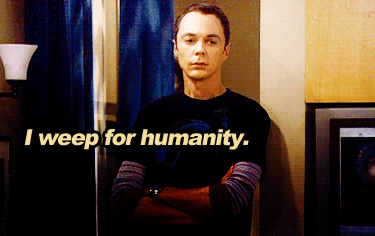When schoolwork feels difficult and none of your problems seem to work out, it is tempting to sink into hours of guilty pleasure. To that end, American sitcom “The Big Bang Theory” is a perfect refuge for those who want to forget their daily problems and recede into lighthearted laughter; for although it may be shallow, the show also has the therapeutic effect that will meet your expectations.
“The Big Bang Theory” mainly portrays the personal lives of four “nerdy” scientists – Leonard Hofstadter, Sheldon Cooper, Howard Wolowitz, and Raj Koothrappali – and the amiable waitress Penny. The scientists’ lack of experience with women lead them to make many mistakes around Penny, which creates humorous situational irony. At the same time, the show affectionately portrays the characters’ human sides outside their workplace and encourages the audience to fall in love with each character.
Although the audience can witness clear development of characters and their relationships as the show progresses, the show does not have a clear, developing plotline. This allows the viewers to laugh along with any random episode they may choose. Our recommendations would definitely include “The Barbarian Sublimation” (Season 2 Episode 3) and “The Staircase Implementation” (Season 3 Episode 22).
As viewers would easily conclude from these two episodes, the show’s greatest strength lies in the character Sheldon Cooper, who is very difficult to dislike despite his erratic behavior in daily situations. Sheldon may be extremely condescending and antisocial, but at the end of the day, beneath his veil of pedantic jargon lies his genuine concern for his friends. Sheldon is also funny because his comments, as helpful as they are in Leonard’s science experiments, are helplessly inappropriate in social situations. To a crying Penny, Sheldon remarks, “Tears seem appropriate. Enlargement of the heart muscle, or hypertrophic cardiomyopathy is a serious disease.”
However, viewers should keep in mind that “The Big Bang Theory” has been met with mixed reviews since its first airing in September 2007. The series is arguably racist and sexist. Stereotypical portrayals of nerdy scientists, sexy women, and Asians are not only suggested, but also act as crucial elements that lead the show. The very first episode of the show suggests that such stereotypes should also be taken as innocuous joke. The sympathetic Penny asks Raj, the shyest scientist who – coincidentally – happens to be Indian, “Do you speak English?” as a chortle echoes in the background.
Leonard’s old grandmother is repeatedly made fun of due to her body shape that is no longer like that of a sexy young woman; Penny embodies the “dumb blonde” who can make no sense out of the jargon that Sheldon and his friends use. The four guys have little to no social abilities and make generalizations about women all the time, including those that may be too offensive to be excused as simple ignorance. Since the guys frequently aim to take a pretty girl on a date, objectification of women becomes a serious issue – all women are depicted as passive beings “out of league” for the nerds.
To anyone who is considering watching the show, we assure you that “The Big Bang Theory” is absolutely hilarious. But to perceive this show as the accurate representation of the real world is a serious mistake; a maximum of two episodes per day – accompanied with breaks to reflect on the stereotypes of the show – should be enough therapy for a stressed high school student.


